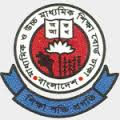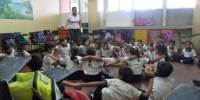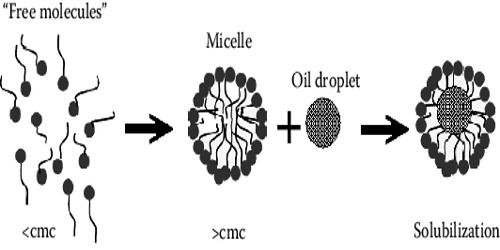Introduction
The Higher Secondary School Certificate , also known as HSSC, is a public examination taken by students of Intermediate college (Junior college) in Bangladesh,Pakistan and in the states of Gujarat, Kerala, Tamil Nadu, Andhra Pradesh, Punjab, Maharashtra and Goa in India. The examination structure differs from board to board. But in the most of the boards, they are subjective examinations. HSC is an equivalent to GCE A Level in England. Exams for this takes place twice a year in February-March and October-November.This study conducted for academic purpose of partial fulfillment for M.Sc. degree in statistics. This kind of study provide a great scope for a student of statistics to be familiar with practical experience of research works as well as to implement statistical theories in practical needs. The population for the study was selected the most convenient and available one, the student of Jahangirnagar University only first year student (Forty batch).
After passing S.S.C the students are admitted in different college. In the college level the academic results of the students differ substantially afterward. Students also come from different socio-economic and different regions throughout the country. So it is a question raised whether socio-economic and regional background of the students is responsible for the variation. So the study was conducted to assess the relationship between academic performance and socio-economic and regional background of the students.
Background
Education is the backbone of a nation. Without education, no nation can make any progress. So education is one of the basic needs for the development of any country. It is the measure of self-reliance. It makes a man eligible for serving the country. But in our country the standard of education of the students in college level seems to be disappointing. Performance is not a satisfactory level. Their actual capability is relatively low compared to the academic qualification they achieved. Institutional education does not expand the horizon of their knowledge. Now a day, most of the students study for only degree rather of their knowledge. Perhaps, our education and administrative systems are mainly responsible for this trend. Political instability seems to be party responsible for this situation. According to Freehold In third countries students also often feel or are made to feel, that they will appear as selfish if they concentrate too much on their own problems, which are minor compared to what other people in the country suffer. By the same token ministries of education see no need to pay much attention to the complaints of a small monitoring a transitional stage of life. On the other hand, aversion to study, of the students may arise due to reasons of political and economical crisis.
Now a day’s education cannot give assurance of economic security students does not know whether will get any gob after completion of hither education. His future is uncertain. Unemployment is curses of our country. The students are generally frustrated. They cannot decide that what they will do in the future. They do not have specific destination. They are waiting for a life of uncertainty. To get rid of these difficulties, the students now think it better to go over to the foreign countries. By any means, they try to go out of the country. It may either be for education or for earning money. Thus we see that according to their ability, they are going to the U.S.A., Canada, England, Australia, and Austria etc. Some of them are gain to Middle East with the only motive of earning a little bit of money. Since the future of the students of our country is full of uncertainty and since there is no proper judgment of eligibility in the job market, we observe that the expectation goals of the students are concealed. Most of the times their expectations are beyond their eligibility. We know our country is beset with different types of problems, e.g. population problem, unemployment problem, political instability etc. all these problems have created a disastrous situation in our national economy. Standard of living of vast majority is deteriorating day by day. The cost of living is getting higher and higher. Life is becoming very cumbersome. Due to those growing problems one is becoming more self-concentrated. Virtues of humanity are also eroding day by day. This study tried to cover all the aspects discussed above particularly the factors, which apparently the performance and expectation goals of higher secondary students. Per is the most important determinant of eligibility of the students. In all spheres of life, the people are given opportunities or facilities on the basis of their performance. The performance of the students is generally on the basis of results of S.S.C examination. So we have considered their results in S.S.C to determine the performance of the students.
Objectives of the study
The main objective of the study is to find out the factors associated for the performance of the students. However, the specific objectives of the study are as follows:
To find out the relationship among parents education and student’s performance in the H.S.C results.
To find out the relationship among parents occupation and student’s performance in the H.S.C results.
To know how does family status impact on the student’s performance in H.S.C results.
To establish the relationship between the previous backgrounds of student’s performance and performance in H.S.C results.
To know the socio-economic background of the students family and previous academic background of the students.
To know the type of occupation the students want to get in future and to see whether there is any relationship with the family income.
To find out the relationship among duration of study hour and student’s performance in the H.S.C results.
Rational
The study is expected to generate to generate valuable information that will be required in the process of planning higher secondary education and admitted in different university, medical and so on. The study may also give some idea about the development of the education sector of Bangladesh. The study will emphasize on the performance, expectations goals and their socio-economic condition and the factors responsible for these aspects. The study will help to determine influence of these factors and to find out whether there is any relation between performance of the students and the different factors. Hence we believe that this study will contribute to find out the reasons behind the problems discussed above. There is a great significance of this study. In this study the performance of the students in H.S.C results of the different college, how affected by the different factors are measured carefully.
For this reason any student and teacher can easily know about which factors are responsible for performance in H.S.C results of the students. One can know from the study, the educational, occupational and socio-economic condition of the students. By this research works the students can know which factors are more responsible for poor performance and which factors is responsible for good performance and also can amendment their attitude that is responsible for bad result. By this research works the guardians can realized about the students performance and their activities.
Review of literature
There was conducted some research works about the students performance in H.S.C result in little area that was based on Jahangirnagar University students. There are two research works that had done by the Jahangirnagar University students that are referred in following
The socio-economic background and the determining factors for the performance in H.S.C result of the students.
The determining factors associated with the performance of the students in H.S.C results and their different aspect.
Methodology and Technical Approach
Introduction
A scientific and systematic methodology is mandatory for a research work to attain a valid conclusion and fulfill its objectives. Methodology, in fact, depicts the procedure of performing the research work step by step. This study is conducted for “Factors Responsible for the Academic Achievement of higher Secondary Certificate Examination.”In this chapter we shall discuss the procedure for determining the representative sample from the population for which we are going to carry out .the procedure conducts of selection of study population, determination of sample size , sampling technique, design of questionnaire , pre-test and coverage . it contains the overall plan of the study.
Study Population
In this study population consists of the first year students (40th Batch) of Jahangirnagar University. In this survey the students have selected mainly to incorporate their H.S.C result and the different aspect, It can said that the population is homogeneous representative.
Determination of sample size
Due to limitation in respect of cost, time etc. here is decided it select a sample of reasonable size. For accuracy of the study it was decide that the percentage of the population to be included in the study to be 50 with the level of significance as 0.05 .thus using the following
Formula we have determined the sample size.
= Design Effect
Where = Sample size.
Z= 1.96
p= Proportion
q= 1-p
d= level of precision
I have taken a sample of 100 students for the study from Jahangirnagar University.
Sampling Design
Data was collected by taking personal interviewing from each selected students. The target population of this survey was the students who recently completed their H.S.C level from different collage and admitted into Jahangirnagar University in different department. For collecting data two stage sampling design is used to select sample observations. The two stage sampling design is drawn by the following way:
At the first stage 26 departments are selected from Jahangirnagar University randomly.
At the second stage more than 2 and less than or equal 6 students are selected from different departments randomly which are selected in first stage. Finally in this study the survey found 100 sample observations.
Questionnaire Development
Preparation of questionnaire is an essential part of any research work. And an appropriate questionnaire is necessary to conduct a worthy study and should have some important characteristics, such as.
- a. Questions should be easily understandable to the respondents.
- b. Number of questions in questionnaire should be as much as required.
The formation of the questions should be such that necessary information for the study can be collected.
In order to achieve the objectives of the study a pre-coded questionnaire was designed which includes the following information:
Identification of the respondents (name, sex, department etc.)
Family background (father’s and mother’s education, occupation, family’s income, expenditure etc.)
Student’s performance in S.S.C level.
Type and location of students S.S.C & H.S.C School and location of student’s residents.
Students average self study time and average spending time for recreation.
Pretest Interviewing
After preliminary development of the questionnaire, it had been carried out a pretest on 10 randomly selected students from different departments from Jahanginagar University. These students were pointed out for some drawbacks/shortcoming and incompleteness of the questionnaire and modified/included some of the questions for the judgment of the answers. On the basis of the consultation of these respondents it was then modified according to necessary. This questionnaire and thus had a modified questionnaire which was more consistent and relevant to the objective of my study.
Instrument of Data Collection
The data for the study were collected by the direct interview method. The draft questionnaire was prepared and pretest before finalization.
Data Collection
In Jahangirnagar University data was collected by conducting personal interviewing to the selected students in their resident hall. Two of my female friends helps me to collect data from female respondents. For this survey the data are collected from different departments in Jahangirnagar University. In Jahangirnagar University Statistics, Zoology, Govt. & politics, Drama and dramatics, Public administration, Philosophy, History, Archaeology, Bangla, Information Technology, International Relationship, Economics, Physic, Chemistry, Environmental Science, B.B.A, Botany, English, Finance & Banking, Bio-technology & Genetic engineering, Pharmacy, Geography & Environmental Science, U.R.P, Marketing, Computer Science & Engineering and Microbiology department are selected.
Data Processing
Data processing work includes editing, coding and computers tabulation of the survey data.
Editing
To recheck and scrutinize each questionnaire thoroughly whether the respondents have given any work information is called data edition. The security or editing of the complete questionnaire will help in amending and recording errors or eliminating data that are obviously erroneous and inconsistent. All kinds of mistakes have been corrected which were found in our questionnaire and all the answers have been observed carefully. As a result we had no incomplete and irrelevant information.
Coding
A unique number called code will define every variable. The technique of this process is called coding that makes the data processing easier. The coded data should be checked by the reference of original data to run and edited the miscode by computer, which is called matching editing. We have inter-changed all the qualitative variables in to dummy variable.
Tabulation
Tabulation was done by the help of computer, Univariate and bivariate tables were prepared for the analysis of the data.
Data Entry and Model of Analysis
Coded information was entered into the computer to analyze the data. Analyzing of the data was done by computer programmer. Package program such as SPSS, Microsoft Excel, Microsoft word are used. The purpose of data analysis was to provide answers to research objectives being studied. The analysis plan for this study was planned to clearly address the objectives.
Limitations of the Study
As many things survey has its own limitations and problems. Although the respondents were co-operative in providing the information they hesitant in giving correct information. Limitations of the survey arise of two kinds.
- Survey limitation
- Research limitation
Survey limitation
In this study I faced so many problems in selecting sample, in collecting data and some others stage. I also faced a great problem in collecting data because most of the first year students (40th batch) of different departments are going on their first year final exam. Time for this research work was very limited. Most of the times I had work for this research at night. Some of the respondents showed hesitation to give the correct answer but after a little discussion about the significance of the study they responded positively. Some students felt entangled to give information about parent’s occupation, family’s monthly income, expenditure and other types of personal information. They were agreed after assuring them about the secrecy of the information provided. I faced a great problem to collect information from female students while I was collecting data by interview method. To overcome this problem I took help from my female friends.
Research Limitation
Money and time are the main involvement to complete a research study precisely. I had short time and since I am a student, it is not possible to spend that amount of money to appoint skilled personnel in different phases of our study to carry out the whole study. However, within this limitation I tried my best to make the research finding meaningful.
Background Characteristics of the Students (Univariate Analysis)
Introduction
Univariate analysis is an analysis, which contains only one variable, which may be either continuous or discontinuous. Different tabular and graphical presentation can be evaluated by Univariate analysis. In tabular presentation, we use frequency table for categorical and numerical data. In graphical presentation, we use histogram, bar diagram and pie chart.
Univariate analysis describes the individual characteristics. Summery of individual variables provide an important “first look” at the data. Measuring impact and or developing the model, we must have some knowledge or ideas of descriptive statistics (univariate and bivariate). In univariate analysis we mainly analyze the appropriate measure of location, variability and shape characteristics of variable individually.
The procedure of arraying frequencies is useful for obtaining summary of individual variables and a pie chart is a good visual tool for assessing the relative frequencies of each category.
The study consists of 100 students of the Jahangirnagar University. This chapter consist the different characteristics if the students covered in the study. Generally gender, department, parents occupation, education income, their previous academic background are the main characteristics. The analysis of this information in some details thereby establishing relationship among this aspect. It has evaluated through different tabular and graphical presentation, frequency table has used for categorical and numerical data.
Frequency distribution
To get some information about population we organize the data. The first procedure we use to describe a set of data is a frequency distribution. Frequency distribution is the grouping of the data into mutually exclusive classes showing the number of observations in each.
Distribution of the students by sex
The following table shows the percentage distribution of the students by gender.
Sex of the Students | Frequency | Percent | |
| Male | 58 | 58.0 | |
| Female | 42 | 42.0 | |
| Total | 100 | 100.0 | |
Table 3.1: Frequency table for percentage distribution of the sex of the students.
We can see from the table-3.1 and pie chart-3.1 in the sample there are 58 male students and 42 female students that is about 58% of the students are male and 42% of the students are female. That is male students are greater than female students.
Distribution of Father’s education
In this study fathers education level is very important because it is highly related with their sons or daughter education level. The following table expresses the educational level of the student’s fathers.
Table 3.2: Percentage distribution of the father’s education of the student.
| Fathers Education | Frequency | Percent | |
| illiterate | 2 | 2.0 | |
| primary | 11 | 11.0 | |
| secondary | 17 | 17.0 | |
| H.S.C | 19 | 19.0 | |
| graduate | 25 | 25.0 | |
| post graduate | 24 | 24.0 | |
| Others | 2 | 2.0 | |
| Total | 100 | 100.0 | |
From the table-3.2 and bar diagram-3.2, it is observed that the most of the student’s father (25%) have completed graduate, 24% of them post-graduate, 19% of them H.S.C, 17% fathers are secondary, 11% fathers are primary and 2% of them are others and illiterate. So it is seen that most of the student’s fathers are graduate and very few percentage of the fathers are illiterate.
Distribution of Mother’s education
Mother’s education level is one of the most important factors for their sons or daughter education level. The following table expresses the educational level of the student’s mothers.
Table 3.3: Percentage distribution of the mother’s education of the student.
| Mothers Education | Frequency | Percent | |
| illiterate | 5 | 5.0 | |
| primary | 19 | 19.0 | |
| secondary | 35 | 35.0 | |
| H.S.C | 25 | 25.0 | |
| graduate | 10 | 10.0 | |
| Post-graduate | 6 | 6.0 | |
| Total | 100 | 100.0 | |
From the table-3.3 and bar diagram-3.3, it is observed that the most of the students mothers (35%) have completed only secondary level, 19% of them have only primary education, 25% are also completed their H.S.C level, 5% of them are illiterate, 10% mothers of the students have completed graduate degree and only 6% mothers of the students completed their post-graduate in this study. So it is seen that most of the student’s mothers are secondary level and very few percentage of the mothers are post-graduate.
Father’s Occupation
In this study fathers education is another important factors because it is highly related with their sons or daughter education level. The following table expresses the father’s occupation of the students.
Table 3.4: Distribution of the father’s occupation of the students
Fathers occupation | Frequency | Percent | |
| farmer | 14 | 14.0 | |
| service | 36 | 36.0 | |
| Doctor | 2 | 2.0 | |
| teacher | 13 | 13.0 | |
| Business | 31 | 31.0 | |
| Others | 4 | 4.0 | |
| Total | 100 | 100.0 | |
From the table-3.4, it is seen that most of the fathers (36%) are service holders, 31% of them are business, 13% fathers are teacher, 14% fathers are farmer based on agriculture, 2% fathers are doctor and only 4% fathers occupations are related with others activities
Mother’s Occupation
Mother’s occupation is highly related with their sons or daughter that is why mother’s occupation is very important in this study. The following table represents the percentage distribution of the mother’s occupation of the students.
Table 3.5: Distribution of the mother’s occupation of the students
| Mothers occupation | Frequency | Percent | |
| housewife | 89 | 89.0 | |
| service | 5 | 5.0 | |
| teacher | 6 | 6.0 | |
| Total | 100 | 100.0 | |
From the table-3.5 and pie chart-3.4, it is obviously seen that most of the mothers (89%) are housewife, 6% of them are teacher and only 5% of them are service holders. So it is seen that most of the student’s mothers are housewife and very few percentage of them are service holders.
Family Size of the students
Family size of the student’s one of the most important factor for the results of the students. If the family size is large the parents can not properly provide essential things of their sons or daughters study. The following table shows the percentage distribution of the family size.
Table 3.6: Percentage distribution of the family size of the students
| Range of the family members | Frequency | Percent | |
| 3-5 | 77 | 77.0 | |
| 6-8 | 21 | 21.0 | |
| 9-11 | 2 | 2.0 | |
| Total | 100 | 100.0 | |
From the table-3.6, it is observed that the maximum number of family size (77%) lie in (3-5), 21% of the family sizes lie in (6-8) and 2% of family sizes lie in (9-11). The median of the student’s family member is 6 and the mode of the student’s family member is 5.
Average monthly income of the student’s family
Family income is one of the most important parts of this study because it is highly related of the student’s performance in the H.S.C result. The following table shows the percentage distribution of the family income.
Table 3.7: Percentage distribution of the average monthly income of the student’s family
| Average family income | Frequency | Percent | |
| 1001-10000 | 13 | 13.0 | |
| 10001-20000 | 52 | 52.0 | |
| 20001-30000 | 18 | 18.0 | |
| >30000 | 17 | 17.0 | |
| Total | 100 | 100.0 | |
From the table-3.7, it can be observed that most of the student’s family (52%) monthly income level lie in the range (10001-20000). 18% of the family income lie in group
(20001-30000), 17% of the family income lie in group (>30000) and 13% of the family lie in group (1001-10000).
Average monthly expenditure of the student’s family
The most important variables of this study is the family expenditure because it is highly related to the student’s performance in the H.S.C result. The following table represents the percentage distribution of the family expenditure.
Table-3.8: percentage distribution of the average monthly expenditure of the student’s family
| Average family expenditure | Frequency | Percent | |
| 1001-10000 | 21 | 21.0 | |
| 10001-20000 | 58 | 58.0 | |
| 20001-30000 | 15 | 15.0 | |
| >30000 | 6 | 6.0 | |
| Total | 100 | 100.0 | |
From the above table-3.8, it can be observed that most of the student’s family (58%) monthly expenditure level lie in the range (10001-20000). 21% of the family expenditure lie in group (1001-10000), 15% of the family expenditure lie in group (20001-30000) and 6% of the family expenditure lie in group (>30000).
Residence of the students
In this study it is observed that the student’s come from urban area is than the students come from rural area. From the following table it is seen that 58% of the students come from rural area and 42% of the students are come from urban area.
Table-3.9: Percentage distribution of the types of residence of the students
| Types of residence | Frequency | Percent | |
| rural | 58 | 58.0 | |
| urban | 42 | 42.0 | |
| Total | 100 | 100.0 | |
From the table-3.9 and pie chart-3.5 we see that 58% of the student’s residences are in rural area and 42% of the student’s residences are in urban area. That is the number of rural student’s is higher than the urban student’s has included in this survey.
Distribution of the student’s S.S.C-GPA
GPA of S.S.C exam is highly related with GPA of H.S.C exam. The student’s whose S.S.C GPA is good, they also get inspire for excellent GPA in H.S.C exam. The following table and bar diagram shows GPA distribution in different categories.
Table-3.10: Percentage distribution of the student’s S.S.C-GPA
| S.S.C-GPA of the students | Frequency | Percent | |
| 3.50-3.99 | 1 | 1.0 | |
| 4.00-4.50 | 7 | 7.0 | |
| 4.51-5.00 | 92 | 92.0 | |
| Total | 100 | 100.0 | |
From the table3.10 and bar diagram-3.6, we see that the maximum percentage of GPA of student’s S.S.C examination belongs to (4.51-5.00) and minimum percentage of GPA of student’s S.S.C examination belongs to (3.50-3.99). So we can easily say that in S.S.C level mist of the student’s were good.
Distribution of the student’s H.S.C GPA
The study objective is to find the factors that are responsible for the student’s performance in H.S.C results. H.S.C results of the student’s are carefully collected in this study. The following table and bar diagram shows students results performance in their H.S.C examination.
















